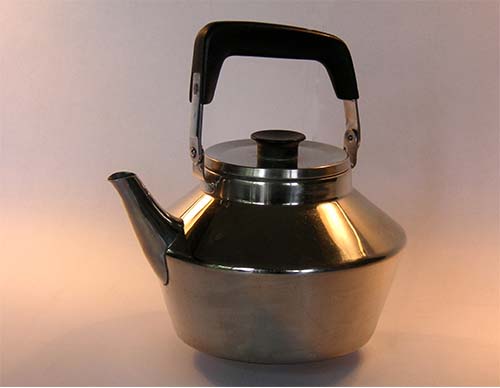1.2 The mass balance: exercise 1. (example)
Course subject(s)
1. Balance Equation: our working horse
BRASS KETTLE
This problem deals with a kettle that you have left on your stove at home when you went away. The stove is left on and so the small amount of water in the kettle is still boiling. As you may know, this could be quite a dangerous situation. At the end of this exercise, you are going to be able to calculate how much time it takes for the kettle to completely dry out, and if your house is in danger of catching fire.
You will need a pen and paper for this exercise. A normal calculator could also be handy. You might want to use the formula sheet, click on the link to download it.

We take a classic brass kettle with a capacity of 2.2 liters of water and start pouring in tap water (density: ρ= 1kg/L) until we filled it with 0.9 liters of water. Then, we turn on the heat on maximum power and after some time the water starts boiling. As soon as the water starts boiling (denoted as t = 0), we measure a mass flow over time out of the kettle of 0.3 g/s. This mass flow is stable until the brass kettle is completely dried out. For simplicity, we ignore evaporation during the warming phase, i.e. before the water boils.
Question 1.2.1
If we want to set up an equation that describes the amount of water in the kettle over time, then we use a balance equation. To tackle this type of problem, you should first perform the most important step: Make a situation sketch!
Do not forget to include the following elements:
- Raw sketch of a kettle and the process
- The key variables marked on the right place in the sketch
- Use arrows to indicate the direction of flows
- Clearly note the control volume

The Basics of transport phenomena by TU Delft OpenCourseWare is licensed under a Creative Commons Attribution-NonCommercial-ShareAlike 4.0 International License.
Based on a work at https://ocw.tudelft.nl/courses/basics-transport-phenomena/.



